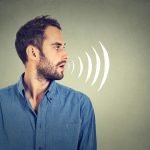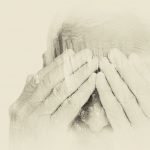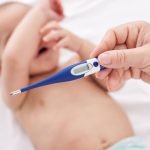Chronic Sinusitis: Beyond the Neti Pot
Approximately 14% of the US population suffers from chronic sinusitis (CS).1 Chronic sinusitis is defined as inflammation in the sinus area for longer than 12 weeks.2 In 2003, the mean medical cost for treatment of this condition was approximately $923 per patient.3
The anatomy and physiology of CS include inflammation or disruption of the mucous membranes from allergies, particles, and infections, most commonly fungal infections. The Mayo Clinic published an article stating that 93% of all cases of CS were mold or fungal related.4 The sinuses are often defined as the frontal, maxillary, sphenoid, and ethmoid pairs. Often overlooked is the cavernous sinus, which has openings to the nasal passages through small holes (the ostea or meatus). Infections, especially fungal, in this area can cause migraines and neurologic symptoms.5 A computed tomographic or radiographic image of the sinuses is typically obtained, with mixed results for specificity of the severity of CS. For example, 40% of asymptomatic adults and 65% with minimal common colds had an abnormal computed tomographic image.6 Even complete opacification of the sphenoid or frontal sinuses is not a marker of clinical severity.7
In my experience, physical examination of the patient with CS will demonstrate tenderness to palpation over the frontal and maxillary sinuses, with swelling and puffiness. Dark circles can be seen around the eyes. Fluid is often observed in the tympanic membrane bilaterally or unilaterally. Mild to moderate erythema is often visualized in the posterior pharynx, with swelling and a thin to thick coating of mucus. The tongue is also coated with mucus, and darker shades of the tongue are associated with more chronic infection or congestion.
Conventional treatment of CS typically consists of several courses of antibiotics, corticosteroids, and antihistamines. Antibiotics seem to have a limited effect; however, according to a meta-analysis8 published in the Cochrane Database of Systematic Reviews, statistically nonsignificant cure rates were associated with antibiotic treatment across 49 trials.
My primary treatment of CS commences with elimination of wheat and dairy products for 3 weeks and any other foods that I suspect the patient may be allergic to. I always check for hypochlorhydria and almost always prescribe betaine hydrochloride (600 mg) at each meal for 1 month. I typically do not use plant enzymes, as the betaine will induce an appropriate response from the gallbladder and pancreas. Mucolytics such as N-acetyl-l-cysteine (1000 mg BID) are used as well. Because most CS is fungal in origin, I prescribe 1 or several of the following herbal extracts 3 times daily in capsules: 10-undecenoic acid (300 mg), raw garlic concentrate (1600 mg), red thyme (300 mg), or oregano oil (300 mg). I personally prefer 10-undecenoic acid because it is inexpensive and has very strong antifungal properties. In addition, I prescribe 2 capsules daily of 15 billion live organisms of Lactobacillus acidophilus and Bifidobacterium lactis that also includes FOS. Liver detoxification is part of the regimen, and I typically prescribe choline (300 mg), taurine (100 mg), and l-methionine (100 mg) TID. Some patients still do not respond well, and for years I sought a remedy to help those patients with recalcitrant CS. About 6 months ago, I discovered a form of sinus wash that I call a sinus bath. It is quite different from the Neti pot but is based on a similar idea. In my 17 years of practice, I have found that this technique works extremely well when combined with the aforementioned therapies.
To prepare the sinus wash, fill a 6-qt bowl with warm water, and add 2 tablespoons of sea salt. In the water, place 4 to 6 drops of tincture of iodine that contains potassium iodine and iodide. Wait 2 minutes; during this period, clean the hands and face well. Next, take a deep breath, hold it, and lower your face about 1 in into the water. Relax and keep your face in the water for 5 to 10 seconds. Blow bubbles from your nose slowly. Lift your face out of the water and towel dry. Blow your nose into a tissue. Repeat the process 2 to 3 times. Once comfortable with this procedure, move to the next level.
At the next level, open your eyes and blink a couple of times after you have submerged your face. Then, close your eyes and keep them closed. Blow bubbles through your nose as before and then try to draw some of the solution up into your nose and back out again. Try to perform 3 of these “sniffs” in and out during each 5- to 10-second facial bath. You may taste saltiness in the back of your throat or may have some of the solution come through to your mouth. This is normal; simply expel it into the sink. Dry off, and blow your nose into a tissue. Repeat the process until the nasal passages are clear. The best outcome results from performing this 2 times daily for 1 to 2 weeks for severe CS, tapering down to daily for another week, and then performing as needed. I have found this to be curative as long as one continues to follow a healthy diet.
David Ramaley, ND, DC graduated from Life West Chiropratic College in 1993 and Bastyr Univeristy in 1995. He practices in Seattle, WA. He recently served on the Washington Association of Naturpathic Physicians as a board member. He practices as a primary care physician and specializes in allergies, digestive disorders, musculoskeletal problems, and difficult neurological cases. He can be reached at [email protected] for further information and resources on sinus kits discussed in the article. His practice website is seattlenaturalhealth.com.
REFERENCES
1. Van Cauwenberge P, Watelet JB. Epidemiology of chronic rhinosinusitis. Thorax. 2000;55:S20-S21.
2. Rubin MA, Gonzales R, Sande MA. Infections of the upper respiratory tract. In: Kasper DL, Braunbald E, Fuaci AS, et al, eds. Harrison’s Principles of Internal Medicine. 16th ed. New York, NY: McGraw-Hill; 2005:185-201.
3. Bhattacharyya N. The economic burden and symptom manifestations of chronic rhinosinusitis. Am J Rhinol. 2003;17:27-32.
4. Ponikau JU, Sherris DA, Kern EB, et al. The diagnosis and incidence of allergic fungal sinusitis. Mayo Clin Proc. 1999;74:877-884.
5. Blumenfeld H. Neuroanatomy Through Clinical Cases. Sunderland, MA: Sinauer Associates Inc; 2002.
6. Gwaltney JM Jr, Phillips CD, Miller RD, Riker DK. Computed tomographic study of the common cold. N Engl J Med. 1994;330:25-30.
7. Bhattacharyya N. The completely opacified frontal or sphenoid sinus: a marker of more severe disease in chronic disease in chronic rhinosinusitis? Laryngoscope. 2005;115:2123-2126.
8. Williams JW Jr, Aguilar C, Cornell J, et al. Antibiotics for acute maxillary sinusitis. Cochrane Database Syst Rev. 2006;3:CD000243.










